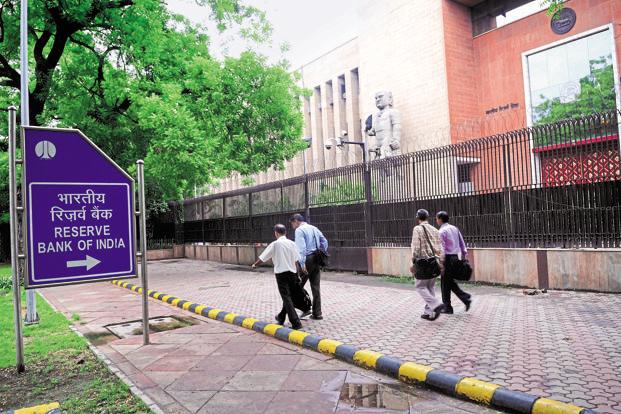For many Indian banks, keeping asset quality impeccable at any cost is the Holy Grail to satisfying investors and pushing up their valuations. From now on, they will find it difficult. India’s banking regulator seems to have cracked the Da Vinci code of lending in the world’s fastest growing major economy.
Early this month, Yes Bank Ltd’s annual report for fiscal year 2015-16 showed that the lender’s assessment of bad loans in the previous fiscal year was very different from that of the Reserve Bank of India (RBI). For 2016,Yes Bank had disclosed gross non-performing assets (NPAs) of Rs748.9 crore, but the RBI’s assessment of the bank’s correct level of gross NPAs was, hold your breath, more than six times higher—Rs4,925.6 crore. Had Yes Bank assessed the quality of its loan assets the way RBI would have liked it to, its 0.8% gross NPAs would have been 6%.
As a result of this divergence, the difference in provisioning for the year stands at Rs858 crore. This would have pared the bank’s net profit by 22%.
As far as the net NPAs are concerned, there has been a divergence of Rs3,319 crore between Yes Bank’s reported figure and the RBI’s assessment.
There has been a divergence between the RBI assessment and the actual reporting of bad loans by at least two other private-sector lenders—ICICI Bank Ltd and Axis Bank Ltd. At ICICI Bank, the difference in gross NPAs was to the tune of Rs5,105 crore, leading to an additional provisioning of Rs1,071 crore in 2016.
At Axis Bank, the banking regulator had found a gross NPA divergence of Rs9,478 crore, raising its bad loans in the last fiscal year to Rs15,566 crore.
If we assume that the regulator’s assessment is correct, then Axis Bank’s gross NPAs in 2016 would have made up 4.5% of its loan book against the reported 1.78%. At ICICI Bank, gross NPAs would have been 7% against 5.85%.
In fiscal year 2016-17, Yes Bank reported 1.51% gross NPAs; Axis Bank 5.52% and ICICI Bank 8.74%. To what extent they would rise following the RBI’s inspection of their loan books is anybody’s guess at this point.
Probably these three banks are no exceptions. Such divergence between the RBI’s assessment of the loan books and banks’ recognition of bad assets may come to light at a few others, including government-owned ones, when they make public their annual reports although the quantum of “underreporting” may vary.
The genesis of this is an RBI notification on 18 April which says, “There have been instances of material divergences in banks’ asset classification and provisioning from the RBI norms, thereby leading to the published financial statements not depicting a true and fair view of the financial position of the bank.” The regulator advised the banks to make adequate disclosures of such divergences in the notes to accounts to their annual financial statements.
RBI inspectors found these when they took a close look at the loan books of all banks in the second half of 2015 under the so-called “asset quality review”, or AQR, a first-of-its-kind review to force the banks to clean up their balance sheets.
Under the regulatory norms, when a borrower is not able to service a loan for three months, it becomes an NPA and the lender needs to set aside money or provide for it. Then, why should there be any divergence?
Well, it’s not always that simple; under certain circumstances, one can take a “view” on whether a particular loan is good or bad. For instance, when the principal or interest payment for a particular loan is overdue between 61 and 90 days (and not exceeding 90 days), this is called special mention account-2 or SMA-2. If a loan exposure continues to be in this category for months, a prudent banker would prefer to classify it as an NPA even though technically it can continue to be treated as a standard asset.
Then, there are complexities for some of the restructured infrastructure loans. There have been cases where banks have given the borrowers more time, depending on the date of commencement of commercial operations. Many such loans have been restructured twice and continue to be tagged as standard assets in banks’ books. Often, the date of commencement of commercial operations is subject to interpretation and the RBI may not be comfortable with such cases.
The real issue lies elsewhere. While conducting the AQR, RBI inspectors had found many instances of the same loan exposure being classified as bad by one bank but good by another. How does this happen? Well, this is a kind of financial innovation which some of the Indian banks are quite good at. They disburse working capital loans to the stressed companies which help them service their term loans; they also disburse fresh loans already sanctioned—again to help the borrowers pay back the loan instalments. There are also instances of banks giving new loans to other group companies of stressed borrowers for the same purpose. I know of quite a few such instances, but I am not suggesting that these three banks have indeed resorted to such practices, technically called “evergreening”.
There have been many instances where the auditors of a bank do not agree with the management point of view on certain loan accounts and they make their displeasure public in the notes to the accounts.
Now, we are seeing the divergence between the bank management’s treatment of a loan account (endorsed by its auditors) and that of the banking regulator.
Interestingly, the RBI has refrained from taking any action against such banks and left it to the market to punish them. By disclosing the divergences, the banks run reputation risks, but what about the auditors? Both the banks and their auditors are under the RBI’s watch now and they will not be able to continue with such practices for long.



